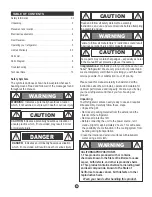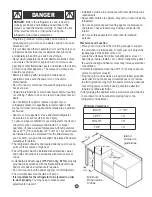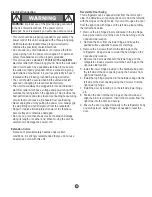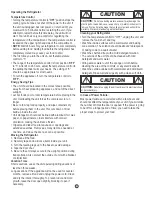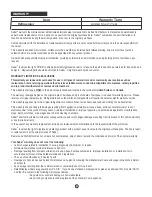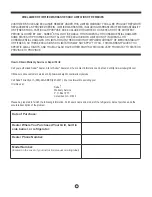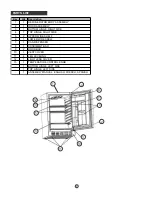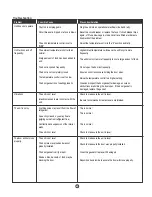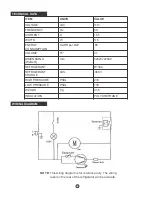
Cleaning your Refrigerator
•
Turn the temperature control to "OFF", unplug the unit, and
remove the food, shelf, and tray.
•
Wash the inside surfaces with a warm water and baking
soda solution. The solution should be about 2 tablespoons
of baking soda to a quart of water.
•
Wash the shelf and tray with a mild detergent solution.
•
The outside of the unit should be cleaned with mild
detergent and warm water.
•
Wring excess water out of the sponge or cloth before
cleaning the area of the controls, or any electrical parts.
•
Wash the outside cabinet with warm water and mild liquid
detergent. Rinse well and wipe dry with a clean soft cloth.
Operating the Refrigerator
Temperature Control
•
Turning the temperature control to “
OFF
” position stops the
cooling cycle but does not shut off the power to the unit. If
the unit is unplugged, has lost power, or is turned off, you
must wait 3 to 5 minutes before restarting the unit. If you
attempt to restart before this time delay, the unit will not
start. Your unit has only one control for regulating the
temperature in the compartment. The temperature control is
located on the upper right hand side of the compartment.
•
NOTE:
Wait 24 hours for your refrigerator to cool completely
before adding food. Adding food before the refrigerator has
completely cooled may cause your food to spoil.
•
The first time you turn the unit on, set the temperature
control to “5”.
•
The range of the temperature control is from position "
OFF
”
to “5”. After 24 to 48 hours, adjust the temperature control to
the setting that best suits your needs. The setting of “3”
should be appropriate for most needs.
•
To turn the appliance off, turn the temperature control to
”
OFF
”.
Energy Saving Tips
•
The unit should be located in the coolest area possible,
away from heat producing appliances, and out of the direct
sunlight.
•
Let hot foods cool to room temperature before placing in the
unit. Overloading the unit forces the compressor to run
longer.
•
Be sure to wrap foods properly, and wipe containers dry
before placing them in the unit. This cuts down on frost
build-up inside the unit.
•
Unit storage bin should not be lined with aluminum foil, wax
paper, or paper towels. Liners interfere with cold air
circulation, making the unit less efficient.
•
Organize and label food to reduce door openings and
extended searches. Remove as many items as needed at
one time, and close the door as soon as possible.
Moving the Refrigerator
1. Remove all the food.
2. Securely tape down all loose items inside your unit.
3. Turn the leveling legs up to the base to avoid damage.
4. Tape the door shut.
5. Be sure the unit stays secure in the upright position during
transportation. Also protect the outside of unit with a blanket,
or similar item.
Vacation Time
Short vacations: Leave the unit operating during vacations of
less than three weeks.
Long vacations: If the appliance will not be used for several
months, remove all food and unplug the power cord. Clean
and dry the interior thoroughly. To prevent odor and mold
growth, leave the door open slightly, blocking it open if
necessary.
CAUTION
CAUTION:
Do not use boiling water because it may damage the
plastic parts. In addition, never use a sharp or metallic instrument to
remove frost as it may damage the cooling system and will void the
warranty. We recommend using a plastic scraper.
CAUTION
CAUTION:
Failure to unplug the unit could result in electrical shock
or personal injury.
In Case of Power Failure:
Most power failures are corrected within a few hours and
should not affect the temperature of your unit if you minimize
the number of times the door is opened. If the power is going
to be off for a longer period of time, you need to take the
proper steps to protect your food.
5


